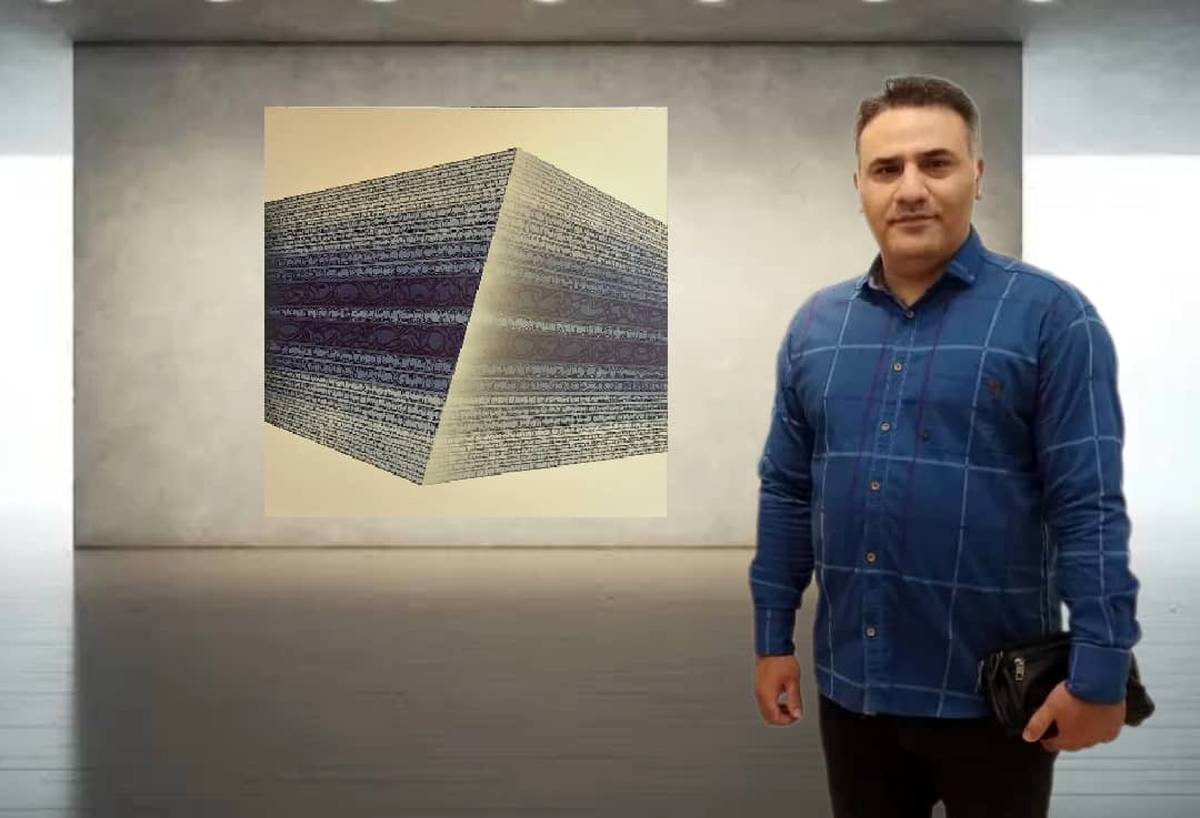
Kiarash Yaghoubi: “The Third Line” Sold at AlBahie Auction, Doha
In Kiarash Yaghoubi’s artistic career, works such as this mark a stage of merging contemporary painting with Iranian calligraphic traditions. Unlike the modern calligraphers of the 1960s, Yaghoubi is less concerned with direct calligraphic expression and more engaged in constructing the conceptual architecture of line within space.
ArtDayMe – Born in 1978 in Tehran, Kiarash Yaghoubi has established himself as one of the innovative figures in calligraphic abstraction in the Middle East.
Seven of his works are housed in the collection of the Islamic Arts Museum Malaysia. His six-piece sale at Opera Gallery Dubai in 2013, along with exhibitions spanning London, Tokyo, and Dubai, brought his name to prominence. The recent sale of his work at AlBahie Auction in Doha once again placed him in the spotlight.
The untitled piece from Yaghoubi’s latest series “The Third Line”—created in acrylic and ink on canvas, 100 × 100 cm—was sold on February 25, 2025 (Esfand 7, 1403 SH) at AlBahie Auction, Doha.

At first glance, the painting evokes a suspended geometric form—a cube or prism-like structure consisting of two principal planes, depicted at a mysterious, floating angle in space.
Its surfaces are covered with rows of repetitive lines and calligraphic motifs reminiscent of Iranian calligraphy or Islamic ornamentation, though rendered illegible and detached from textual reference.
Despite the simplicity of its composition, the work carries a profound conceptual and visual weight: an encounter between geometric modernity and the ornamental, cultural roots of the East.
The structure is built upon perspective and spatial depth. The two slanted planes draw the viewer inward, evoking a movement from the real toward the abstract.
The parallel horizontal lines create a mathematical order, recalling the discipline of modernist or minimalist architecture. The rhythmic repetition of the calligraphic motifs introduces a musical quality—each line acting as a visual measure or beat.
The interplay of thick and thin, light and dark lines generates a subtle complexity within apparent simplicity.
Dominated by shades of blue and gray against beige or white, the palette conveys suspension and stillness. On the right side, the gradual fading of color suggests a transition from matter to light—as if the solid form is dissolving into an immaterial concept.
Yaghoubi’s use of acrylic and ink allows for both precise linear control (through ink) and layered chromatic depth (through acrylic).
His technique recalls printmaking and graphic layering, yet remains distinctly painterly. Here, ink becomes more than pigment—it reintroduces the visual language of writing and the cultural heritage of the East into a modern pictorial field.
This work can be interpreted at the intersection of tradition and modernity.
On one hand, its angular precision resonates with the vocabulary of modern geometry; on the other, the calligraphic motifs recall the aesthetics of Persian and Islamic ornamentation.
The hollow, suspended form becomes a metaphor for cultural identity in the contemporary era—a state between material reality and collective memory.
The fading right edge may symbolize transcendence from matter to meaning, or the instability of identity in the modern world.

From an iconographic perspective, three dominant elements emerge:
• The Cubic Form: A symbol of stability, order, and reason—yet here, it appears disrupted by light and fading, questioning absolute certainties.
• Calligraphic Line: A sign of language, culture, and memory—but rendered meaningless, transformed into an abstract image of language itself.
• Cool Tones: Suggestive of calm, contemplation, and intellectual distance—inviting reflection rather than emotion.
In Yaghoubi’s artistic path, such works signify a mature phase of synthesis between contemporary abstraction and the structural logic of Persian calligraphy.
Unlike the expressive calligraphers of the 1960s, he seeks not to write but to build line—architecturally, conceptually, spatially.
This painting embodies the image of Iranian contemporary identity in dialogue with the order of global modernity—a form suspended between writing and structure, meaning and form.
Its measured color harmony, geometric discipline, and Eastern lyricism make it a distinguished example of concept-based painting rooted in local culture.

Notably, Kiarash Yaghoubi has received ten national awards in calligraphy, including the first prize at Tehran’s Qalam Calligraphy Festival and the Special Award of the 400th Anniversary of Mir Emad’s Passing.
He has held over ten solo exhibitions and participated in more than thirty group shows.
Seven of his works are preserved in the Islamic Arts Museum Malaysia, the largest museum of Islamic art in Southeast Asia.
Following his successful sales at Opera Gallery Dubai and in exhibitions across London, Japan, Bahrain, the UAE, and Turkey, his painting from The Third Line series—measuring 100 × 100 cm—was presented by Mojdeh Gallery and sold for USD 2,600 at the AlBahie Auction, Doha.
These achievements have led many notable collectors to include Yaghoubi’s works in their collections.

LEAVE A RELPY